Early Surge Warning Using a Machine Learning System with Real-Time Surveillance Camera Images
Abstract
1. Introduction
2. Study Site and Video Data Source
3. Methods
3.1. Define Wave Detection and Surge Threshold with Averaged Pixel DN
3.2. Converting Sliced-Image Pixel DN to Temporal and Spatial Variation in Waves
3.3. Marine Parameter Data for Predicting Wave Magnitude
3.4. Data Grouping for Model Training and Testing
3.5. The LSTM Model
4. Results and Validation
4.1. Relationship Between Surge Occurence and Marine Data
- Option 1.
- Use the latest directly recorded marine parameters.
- Option 2.
- Automatically capture the marine parameters of the previous 100 h, predict the current marine parameters through the LSTM, and then input the forecasted marine parameters into the surge prediction model.
4.2. Surge Prediction Model Test Results
4.3. Wave Prediction Model Testing Results: Case of 6 s Early Warning
4.4. Effect of Reducing Early Warning Time by 1 s
4.5. Validation Model Accuracy with Waves Caused by Typhoons
5. Conclusions
Author Contributions
Funding
Institutional Review Board Statement
Informed Consent Statement
Data Availability Statement
Acknowledgments
Conflicts of Interest
References
- Tsai, C.H.; Su, M.Y.; Huang, S.J. Observations and conditions for occurrence of dangerous coastal waves. Ocean Eng. 2004, 31, 745–760. [Google Scholar] [CrossRef]
- Liu, P.C.; Chen, H.S.; Doong, D.J.; Kao, C.C.; Hsu, Y.J. Freaque waves during Typhoon Krosa. Ann. Geophys. 2009, 27, 2633–2642. [Google Scholar] [CrossRef]
- Lin, Y.P.; Huang, C.J.; Chen, S.H.; Doong, D.J.; Kao, C.C. Development of a GNSS buoy for monitoring water surface elevations in estuaries and coastal areas. Sensors 2017, 17, 172. [Google Scholar] [CrossRef] [PubMed]
- Dankert, H.; Horstmann, J.; Lehner, S.; Rosenthal, W. Detection of wave groups in SAR images and radar image sequences. IEEE Trans. Geosci. Remote Sens. 2003, 41, 1437–1446. [Google Scholar] [CrossRef]
- Greenwood, C.; Vogler, A.; Morrison, J.; Murray, A. The approximation of a sea surface using a shore mounted X-band radar with low grazing angle. Remote Sens. Environ. 2018, 204, 439–447. [Google Scholar] [CrossRef]
- Navarro, W.; Velez, J.C.; Orfila, A.; Lonin, S. A shadowing mitigation approach for sea state parameters estimation using X-band remotely sensing radar data in coastal areas. IEEE Trans. Geosci. Remote Sens. 2019, 57, 6292–6310. [Google Scholar] [CrossRef]
- Akila, D.S.; Mori, I.; Dusek, G.; Davis, J.; Pang, A. Automated rip current detection with region-based convolutional neural networks. Coast. Eng. 2021, 166, 103859. [Google Scholar]
- Pugliano, G.; Robustelli, U.; Di Luccio, D.; Mucerino, L.; Benassai, G.; Montella, R. Statistical deviations in shoreline detection obtained with direct and remote observations. J. Mar. Sci. Eng. 2019, 7, 137. [Google Scholar] [CrossRef]
- Morales-Márquez, V.; Orfila, A.; Simarro, G.; Gómez-Pujol, L.; Álvarez-Ellacuría, A.; Conti, D.; Galán, Á.; Osorio, A.F.; Marcos, M. Numerical and remote techniques for operational beach management under storm group forcing. Nat. Hazards Earth Syst. Sci. 2018, 18, 3211–3223. [Google Scholar] [CrossRef]
- Callens, A.; Morichon, D.; Liria, P.; Epelde, I.; Liquet, B. Automatic creation of storm impact database based on video monitoring and convolutional neural networks. Remote Sens. 2021, 13, 1933. [Google Scholar] [CrossRef]
- Andriolo, U.; Sánchez-García, E.; Taborda, R. Operational use of surfcam online streaming images for coastal morphodynamic studies. Remote Sens. 2019, 11, 78. [Google Scholar] [CrossRef]
- Almar, R.; Cienfuegos, R.; Catalán, P.A.; Michallet, H.; Castelle, B.; Bonneton, P.; Marieu, V. A new breaking wave height direct estimator from video imagery. Coast. Eng. 2012, 61, 42–48. [Google Scholar] [CrossRef]
- Andriolo, U. Nearshore wave transformation domains from video imagery. J. Mar. Sci. Eng. 2019, 7, 186. [Google Scholar] [CrossRef]
- Huntley, D.; Saulter, A.; Kingston, K.; Holman, R. Use of video imagery to test model predictions of surf heights. WIT Trans. Ecol. Environ. 2009, 126, 39–50. [Google Scholar]
- Hochreiter, S.; Schmidhuber, J. Long short-term memory. Neural Comput. 1997, 9, 1735–1780. [Google Scholar] [CrossRef]
- Jörges, C.; Berkenbrink, C.; Stumpe, B. Prediction and reconstruction of ocean wave heights based on bathymetric data using LSTM neural networks. Ocean Eng. 2021, 232, 109046. [Google Scholar] [CrossRef]
- Meng, Z.-F.; Chen, Z.; Khoo, B.C.; Zhang, A.-M. Long-time prediction of sea wave trains by LSTM machine learning method. Ocean Eng. 2022, 262, 112213. [Google Scholar] [CrossRef]
- Zhang, M.; Tavakoli, S.; Hirdaris, S. A deep learning method for the prediction of focused waves in a wave flume. IOP Conf. Ser. Mater. Sci. Eng. 2023, 1288, 012007. [Google Scholar] [CrossRef]
- Alizadeh, M.J.; Nourani, V. Multivariate GRU and LSTM models for wave forecasting and hindcasting in the southern Caspian Sea. Ocean Eng. 2024, 298, 117193. [Google Scholar] [CrossRef]
- Sabato, G.; Scardino, G.; Kushabaha, A.; Casagrande, G.; Chirivì, M.; Fontolan, G.; Fracaros, S.; Luparelli, A.; Spadotto, S.; Scicchitano, G. Remote measurement of tide and surge using a deep learning system with surveillance camera images. Water 2024, 16, 1365. [Google Scholar] [CrossRef]
- Huang, W.; Zhao, X.; Huang, W.; Hao, W.; Liu, Y. A training strategy to improve the generalization capability of deep learning-based significant wave height prediction models in offshore China. Ocean Eng. 2023, 283, 114938. [Google Scholar] [CrossRef]
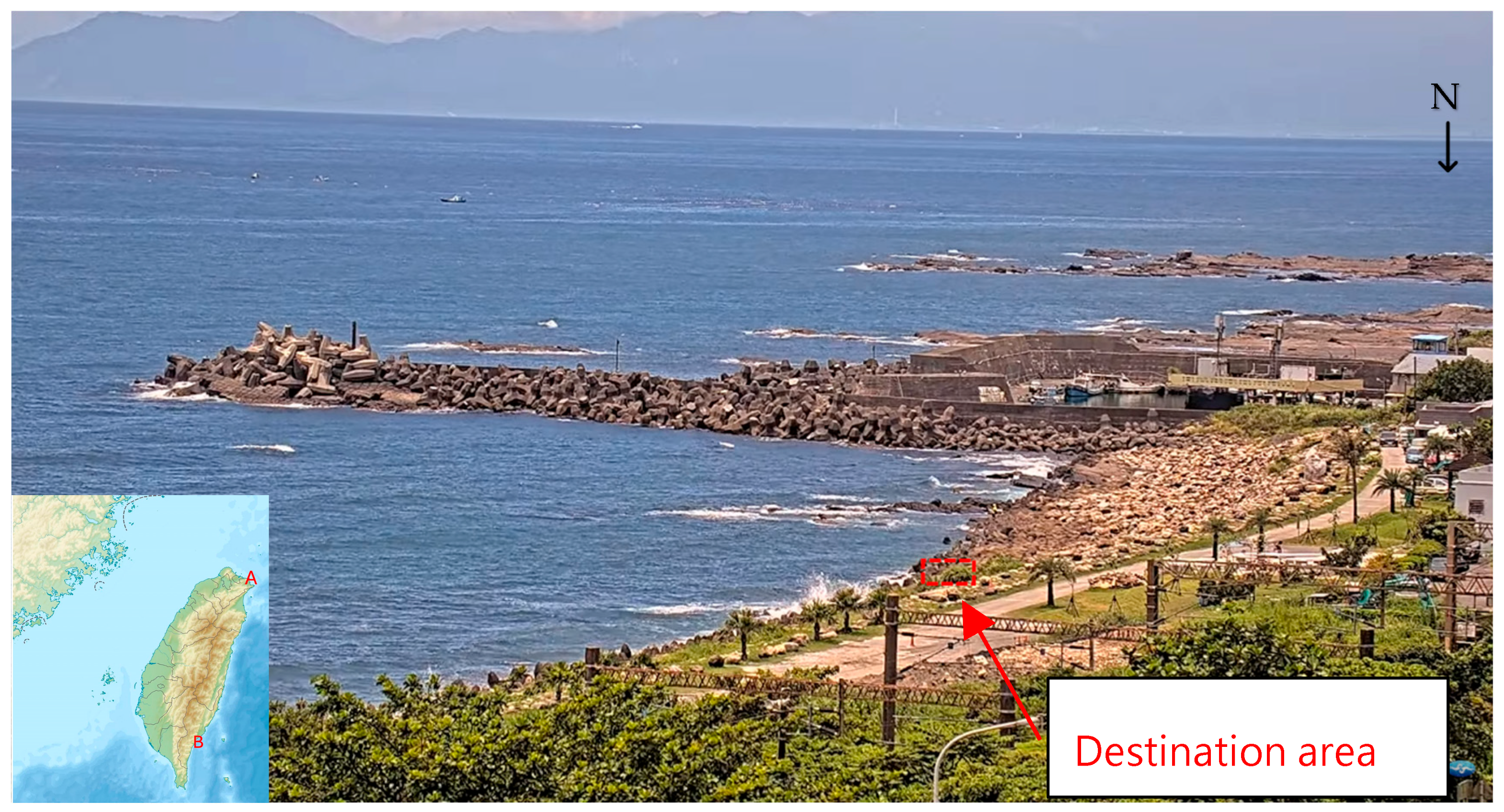
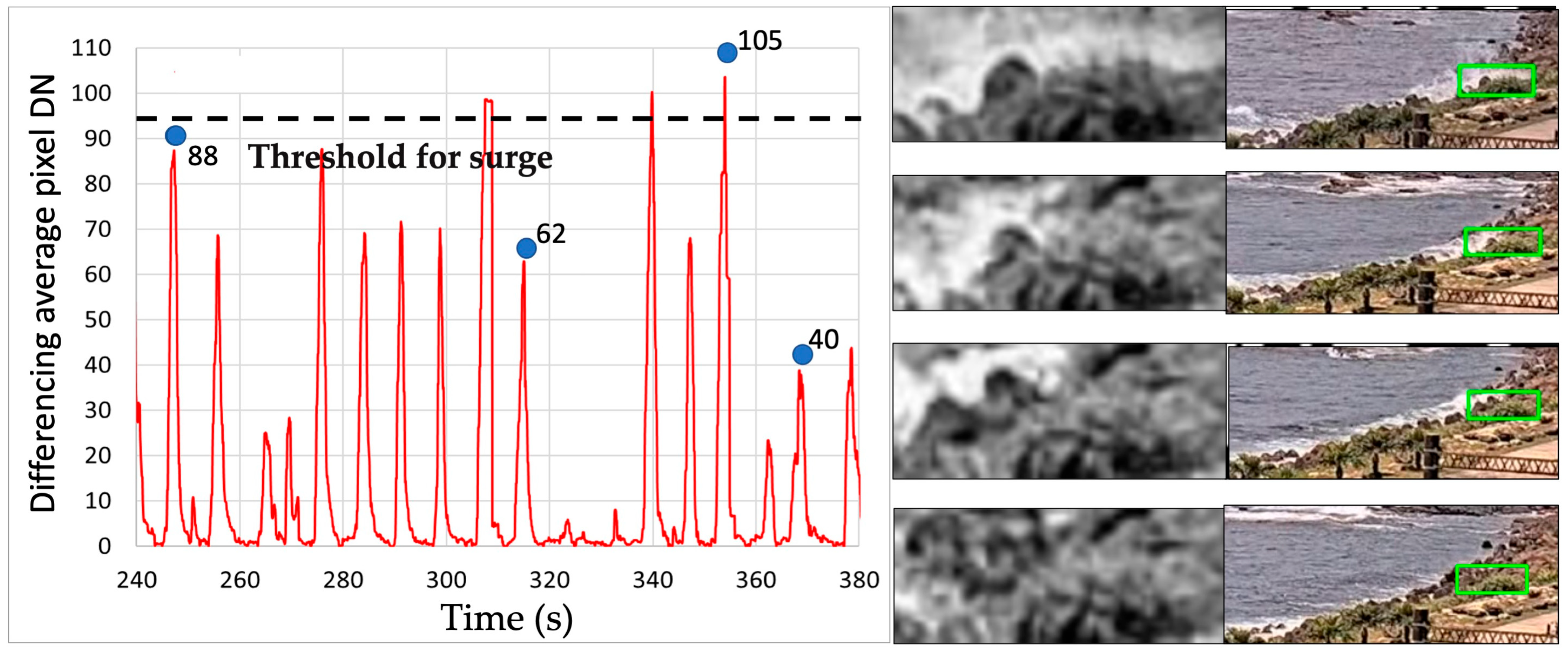
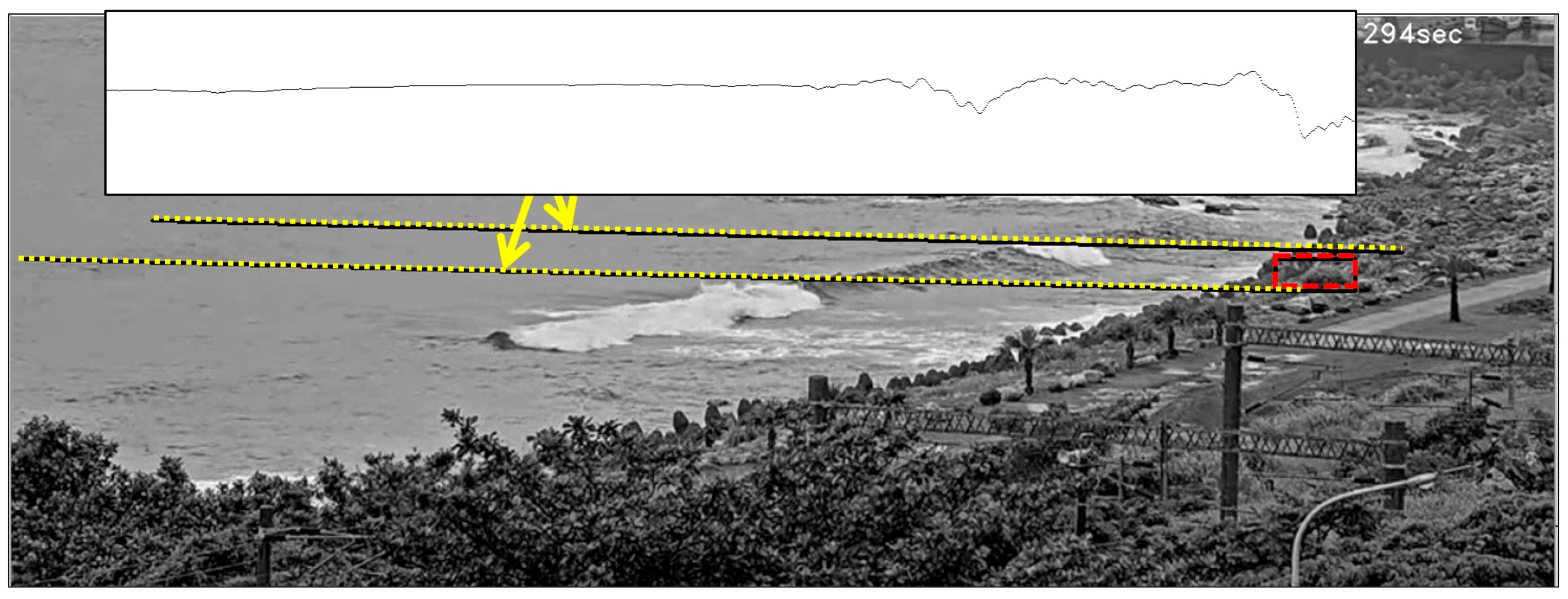





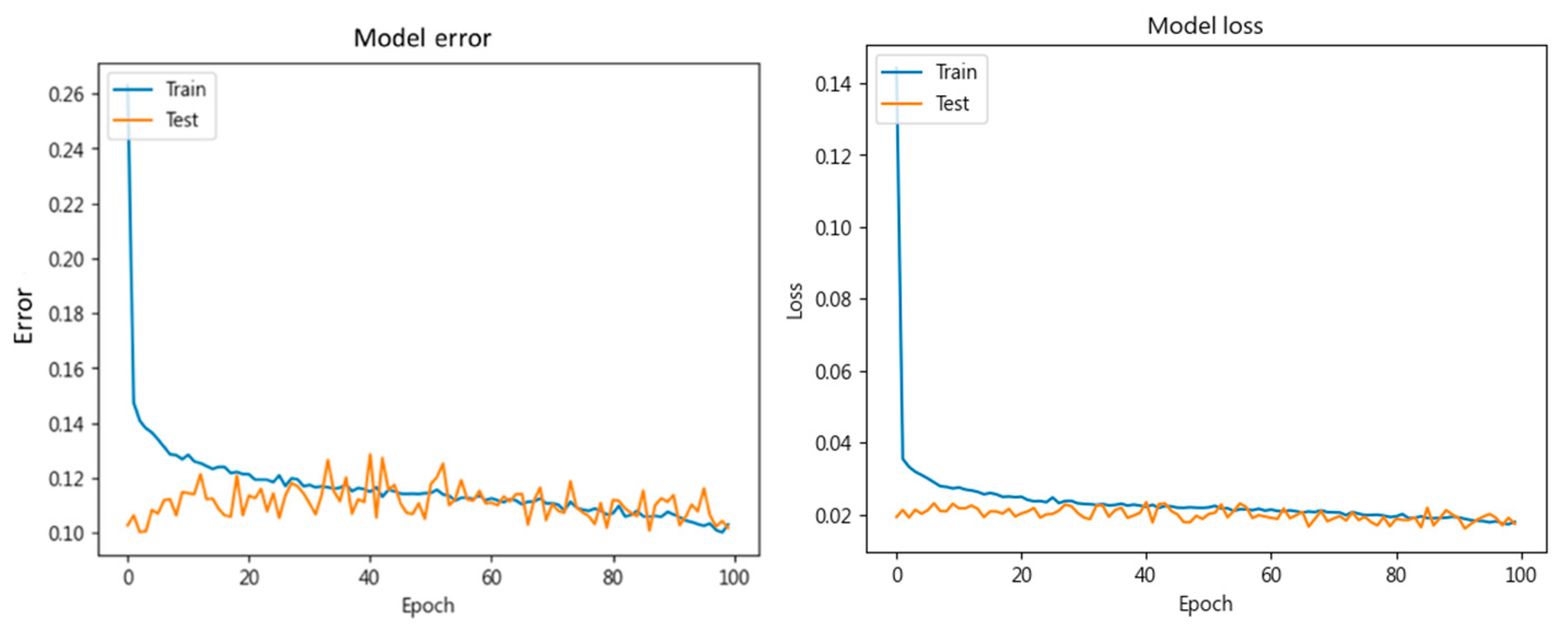
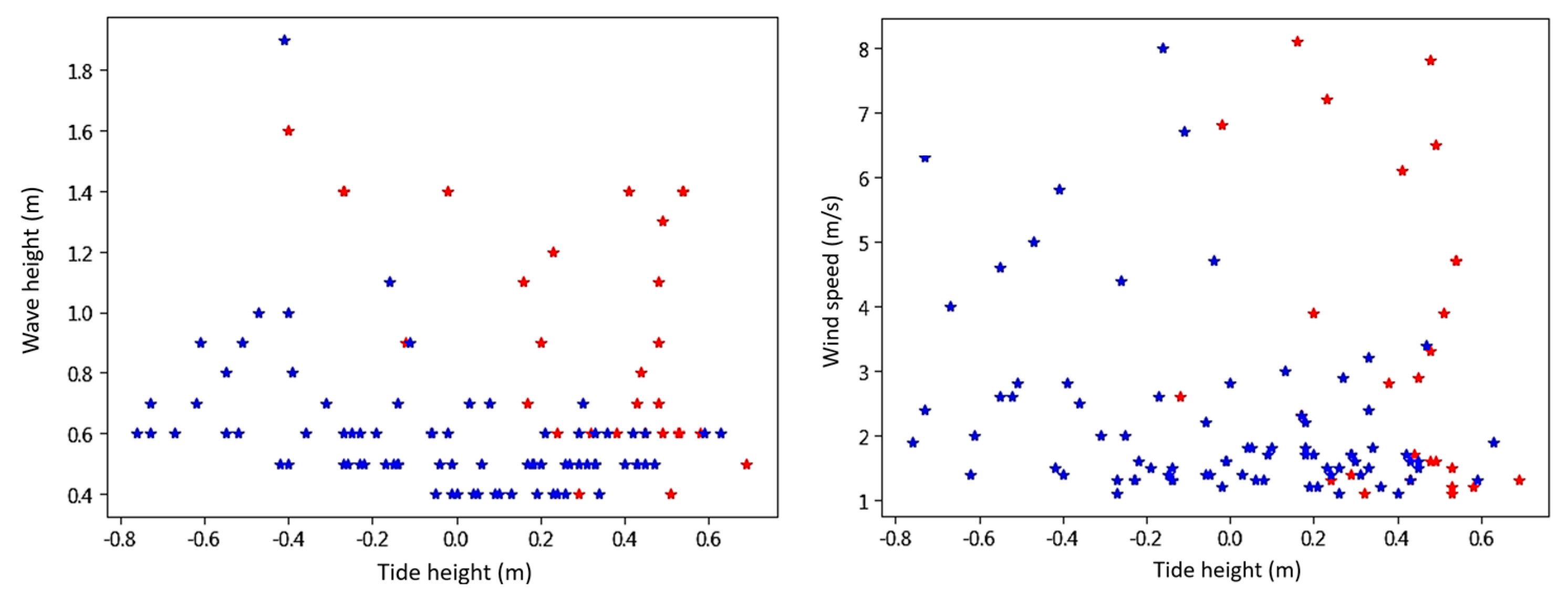

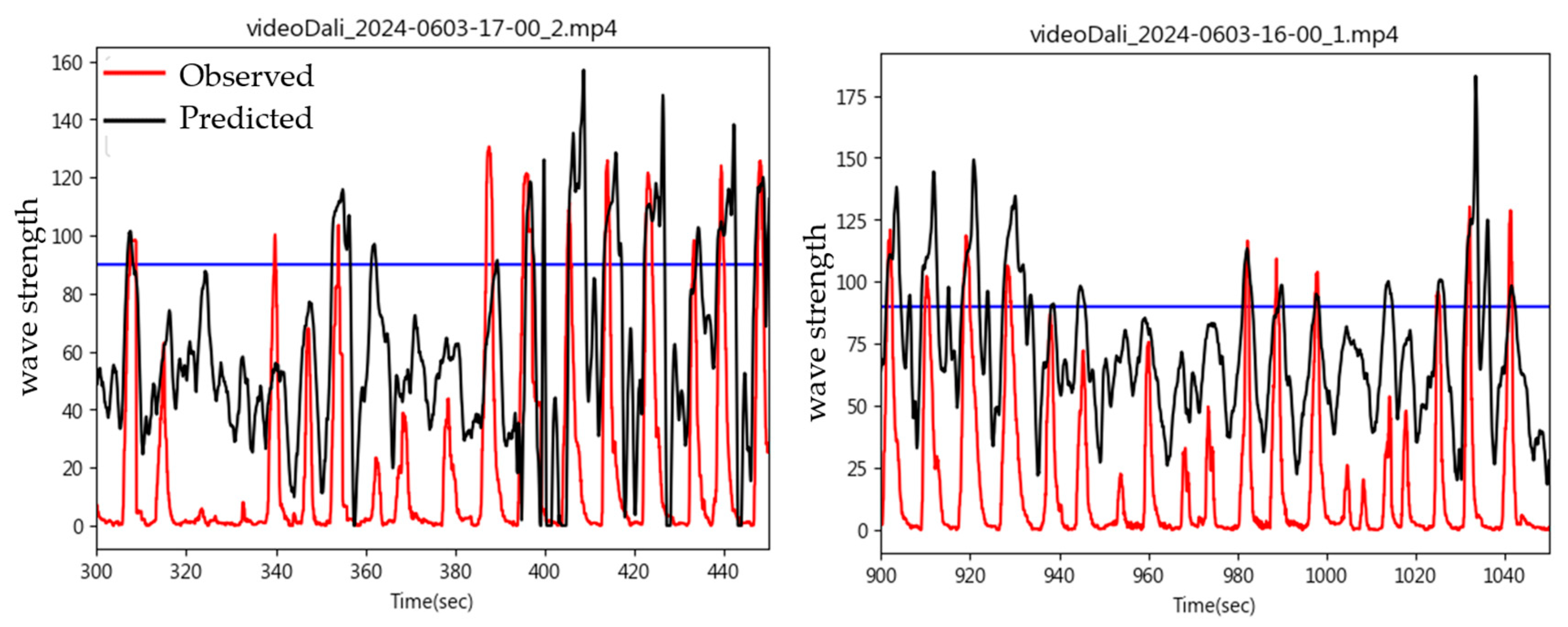
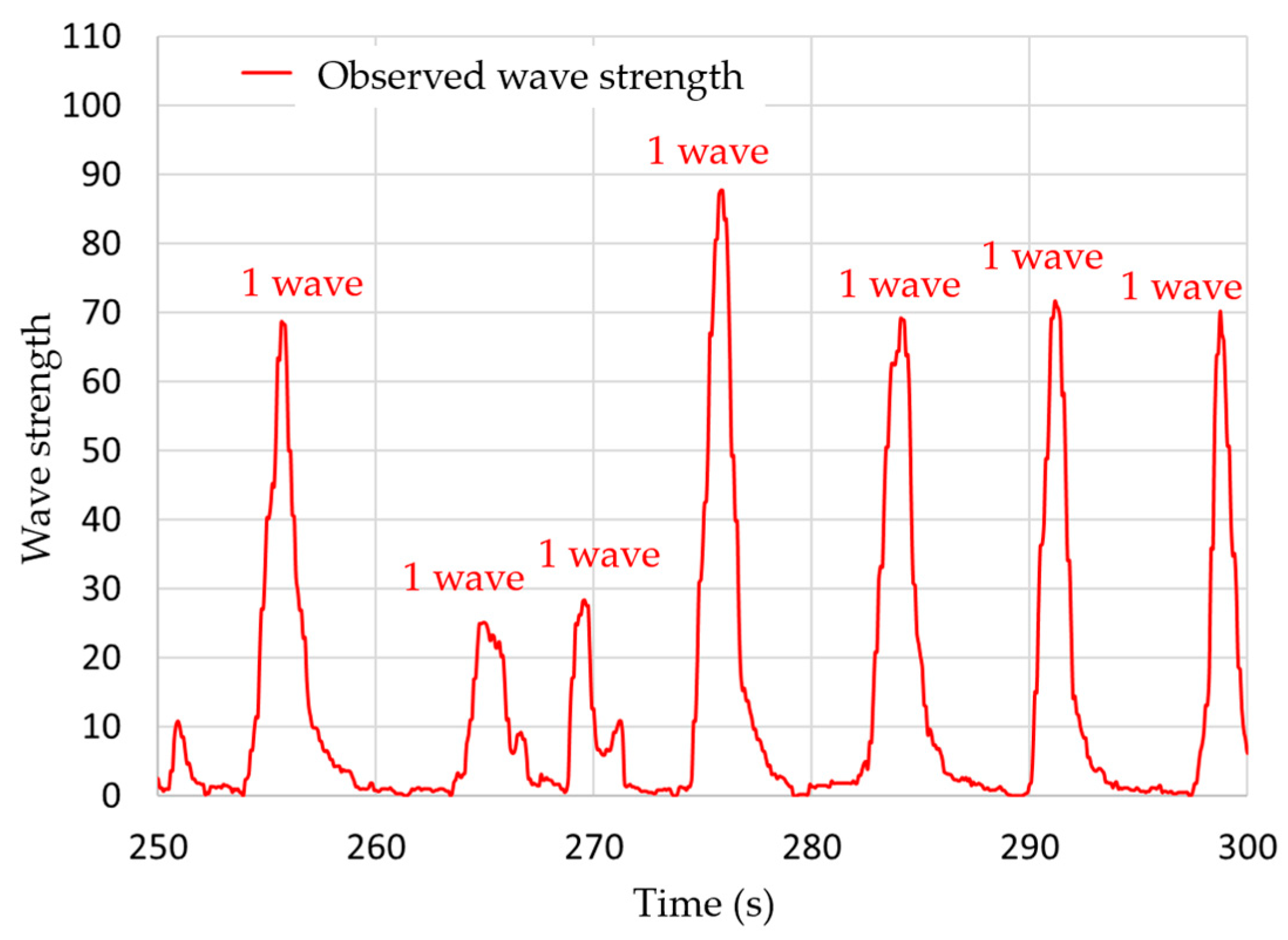
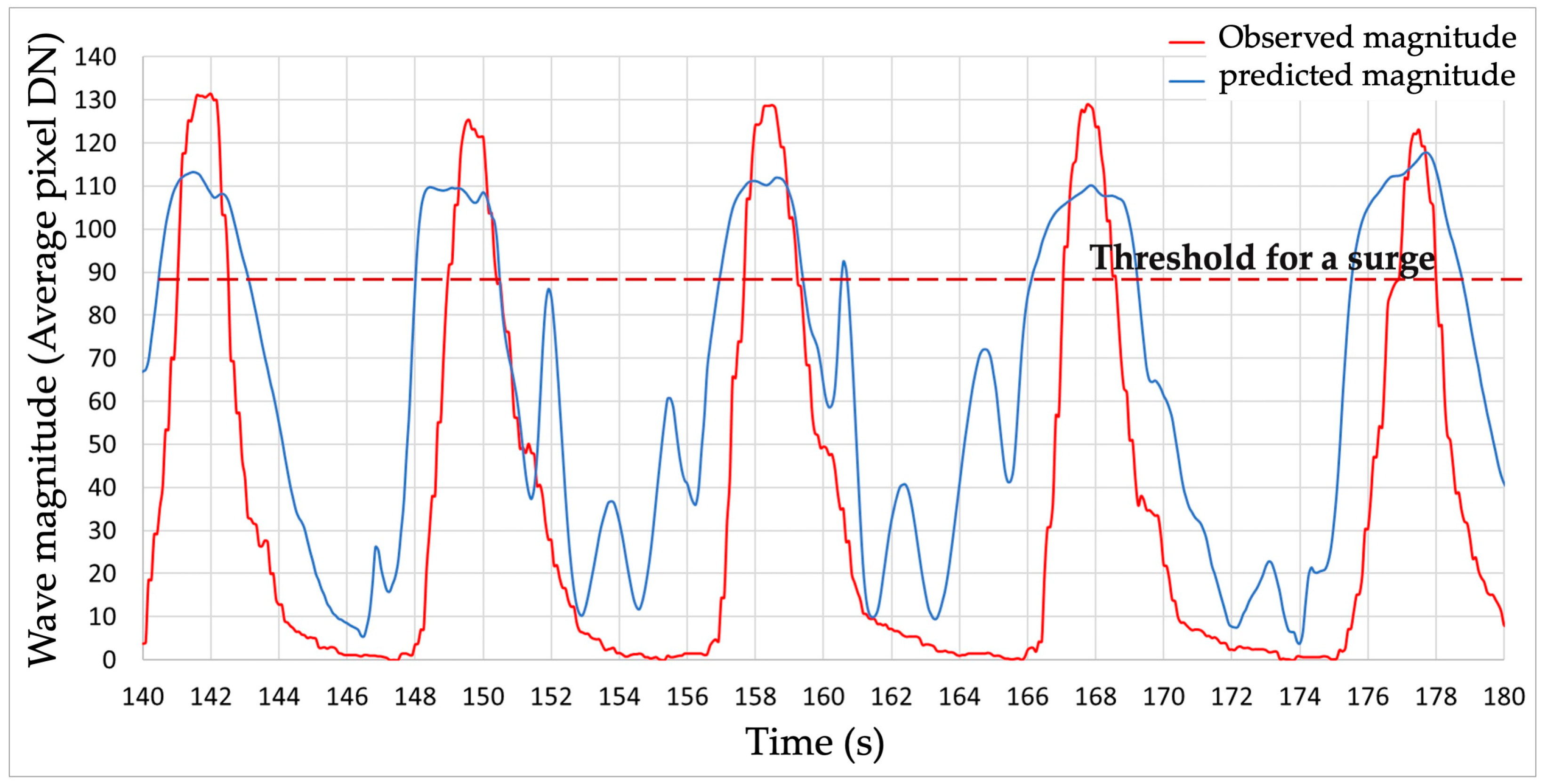

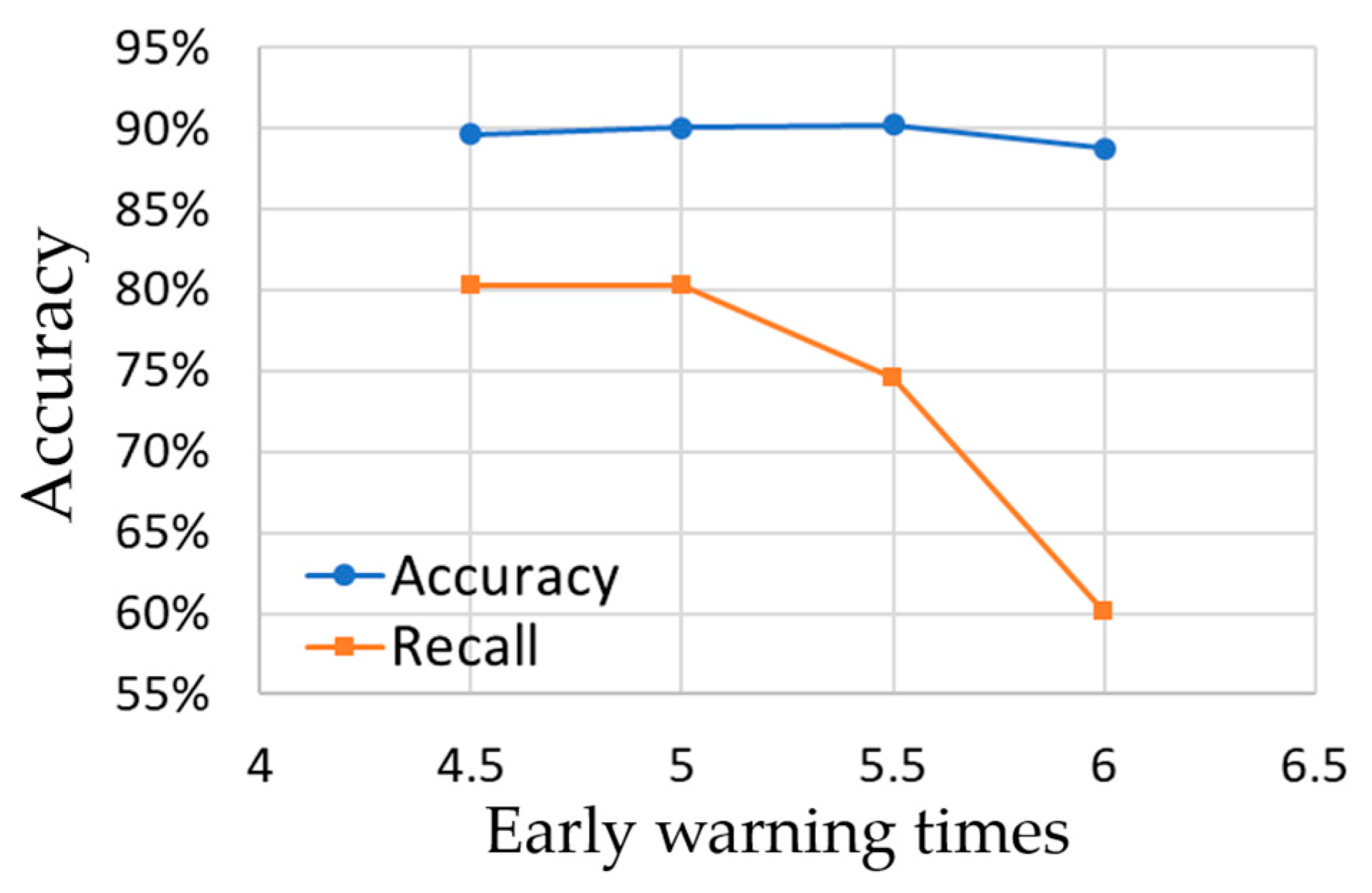
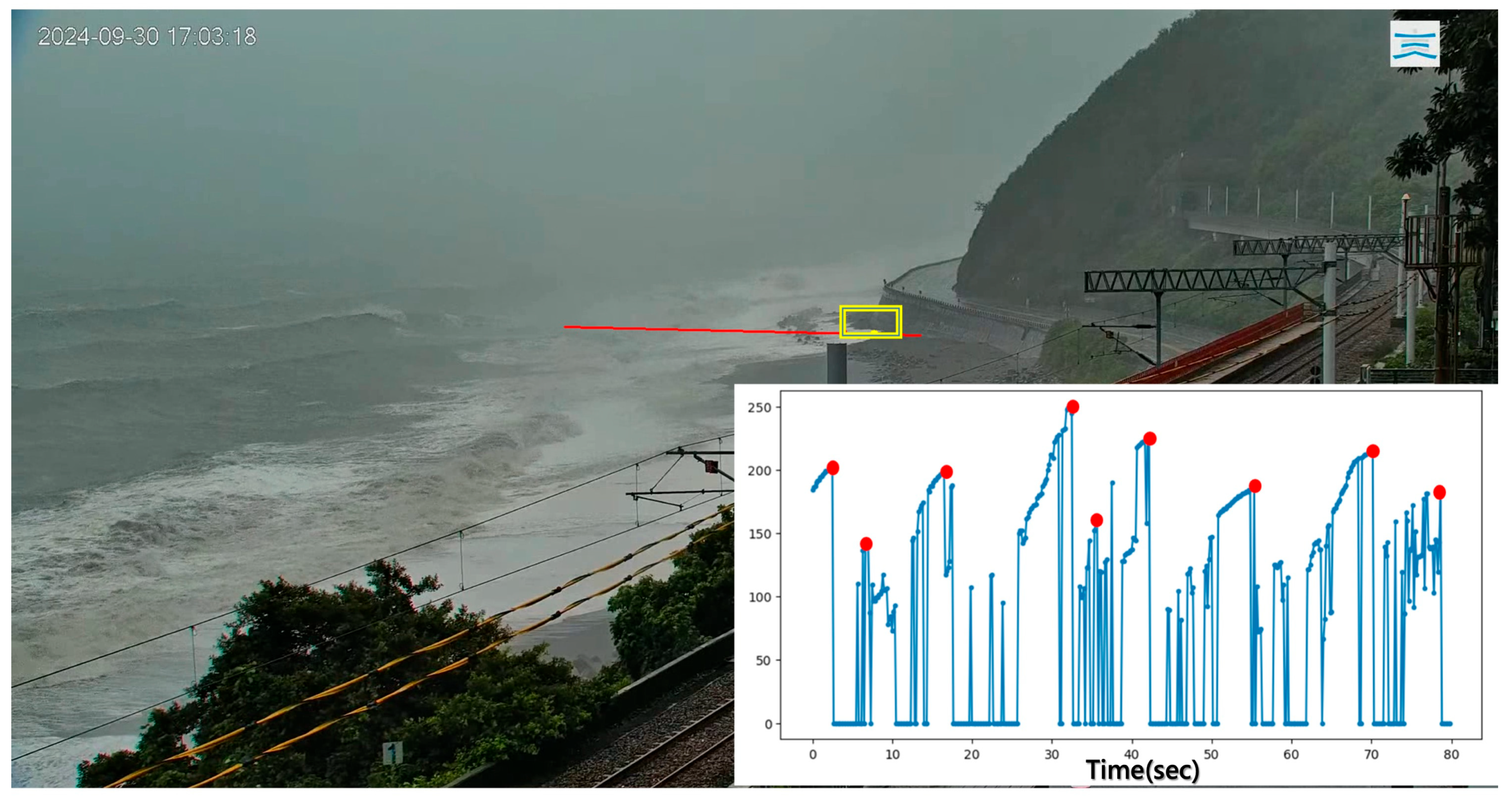
| Recall = 79% Accuracy = 98% | Prediction | ||
|---|---|---|---|
| Surge Event | No Surge Event | ||
| Observation | Surge event | 1793 | 481 |
| No surge event | 4861 | 284,339 | |
| Recall = TP/(TP + FN) Accuracy = (TP + TN)/(TP + TN + FP + FN) | Prediction | ||
|---|---|---|---|
| True | False | ||
| Observation | True | TP | FN |
| False | FP | TN | |
| Recall = 60% Accuracy = 88% | Prediction | ||
|---|---|---|---|
| Surge Event | No Surge Event | ||
| Observation | Surge event | 116 | 77 |
| No surge event | 55 | 924 | |
| Recall = 80% Accuracy = 90% | Prediction | ||
|---|---|---|---|
| Surge Event | No Surge Event | ||
| Observation | Surge event | 155 | 38 |
| No surge event | 79 | 900 | |
| Recall = 76% Accuracy = 74% | Prediction | ||
|---|---|---|---|
| Surge Event | No Surge Event | ||
| Observation | Surge event | 32 | 10 |
| No surge event | 40 | 107 | |
Disclaimer/Publisher’s Note: The statements, opinions and data contained in all publications are solely those of the individual author(s) and contributor(s) and not of MDPI and/or the editor(s). MDPI and/or the editor(s) disclaim responsibility for any injury to people or property resulting from any ideas, methods, instructions or products referred to in the content. |
© 2025 by the authors. Licensee MDPI, Basel, Switzerland. This article is an open access article distributed under the terms and conditions of the Creative Commons Attribution (CC BY) license (https://creativecommons.org/licenses/by/4.0/).
Share and Cite
Chen, Y.-W.; Yu, T.-T.; Peng, W.-F. Early Surge Warning Using a Machine Learning System with Real-Time Surveillance Camera Images. J. Mar. Sci. Eng. 2025, 13, 193. https://doi.org/10.3390/jmse13020193
Chen Y-W, Yu T-T, Peng W-F. Early Surge Warning Using a Machine Learning System with Real-Time Surveillance Camera Images. Journal of Marine Science and Engineering. 2025; 13(2):193. https://doi.org/10.3390/jmse13020193
Chicago/Turabian StyleChen, Yi-Wen, Teng-To Yu, and Wen-Fei Peng. 2025. "Early Surge Warning Using a Machine Learning System with Real-Time Surveillance Camera Images" Journal of Marine Science and Engineering 13, no. 2: 193. https://doi.org/10.3390/jmse13020193
APA StyleChen, Y.-W., Yu, T.-T., & Peng, W.-F. (2025). Early Surge Warning Using a Machine Learning System with Real-Time Surveillance Camera Images. Journal of Marine Science and Engineering, 13(2), 193. https://doi.org/10.3390/jmse13020193






